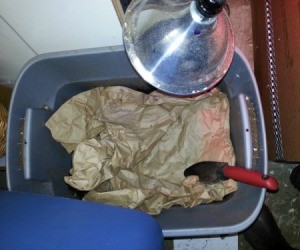 Making your own vermicomposting tub is fun and easy. It reduces waste that would otherwise go to the landfills. It is also very educational for both children and adults alike. You can make a worm compost bin out of a plastic moving tub, so why not start one today!
Making your own vermicomposting tub is fun and easy. It reduces waste that would otherwise go to the landfills. It is also very educational for both children and adults alike. You can make a worm compost bin out of a plastic moving tub, so why not start one today!
Supplies:
Steps:
Great article. I'm sold. I'm going to give this a try, this summer.